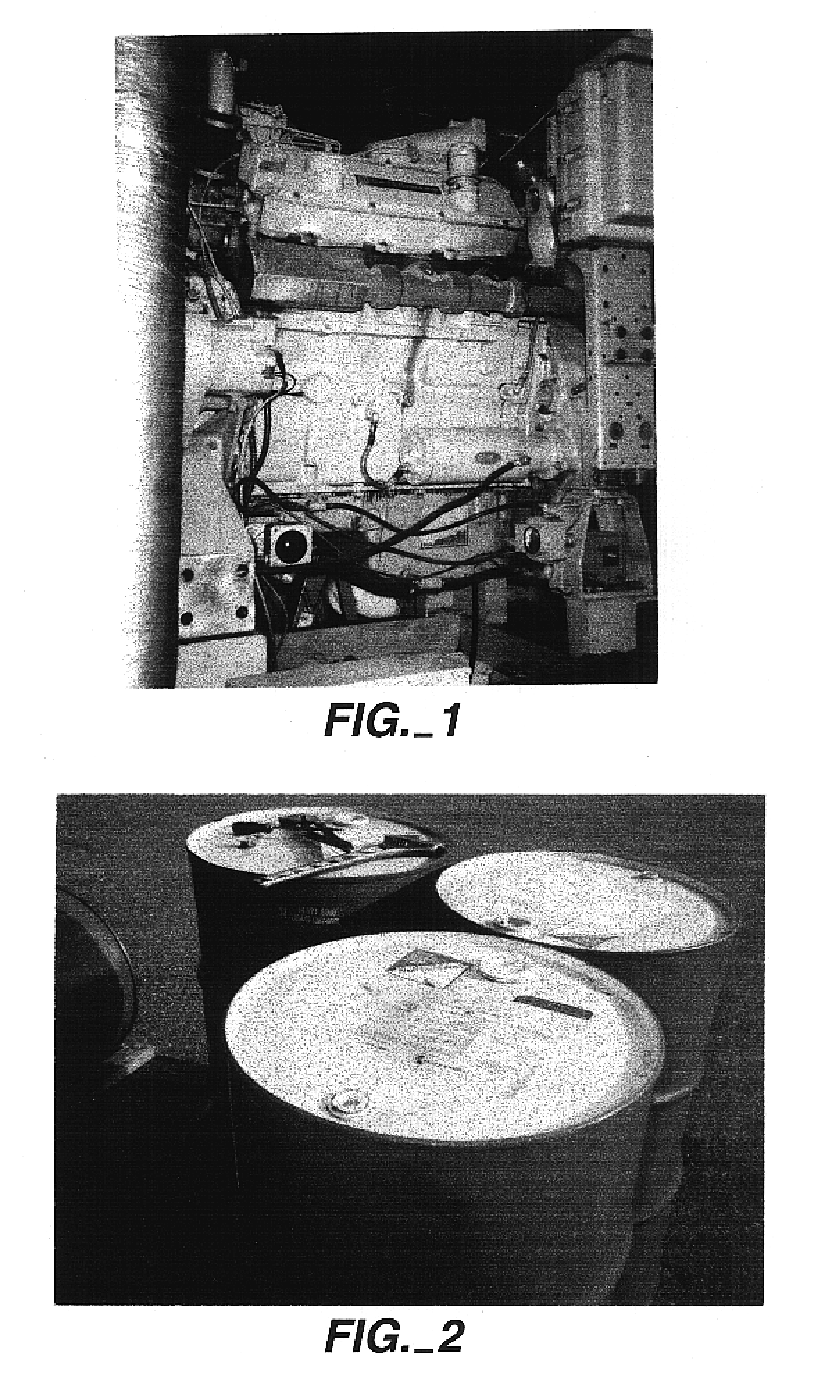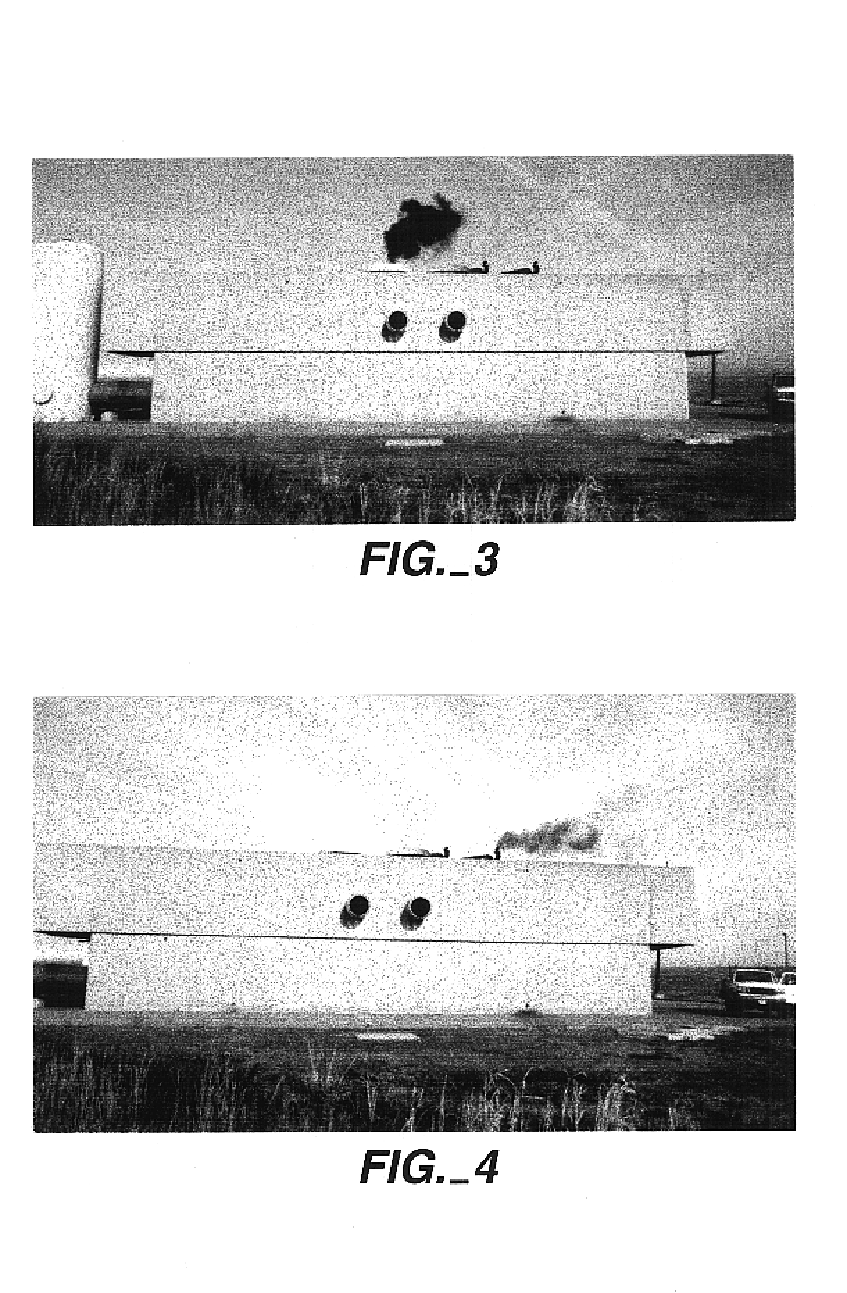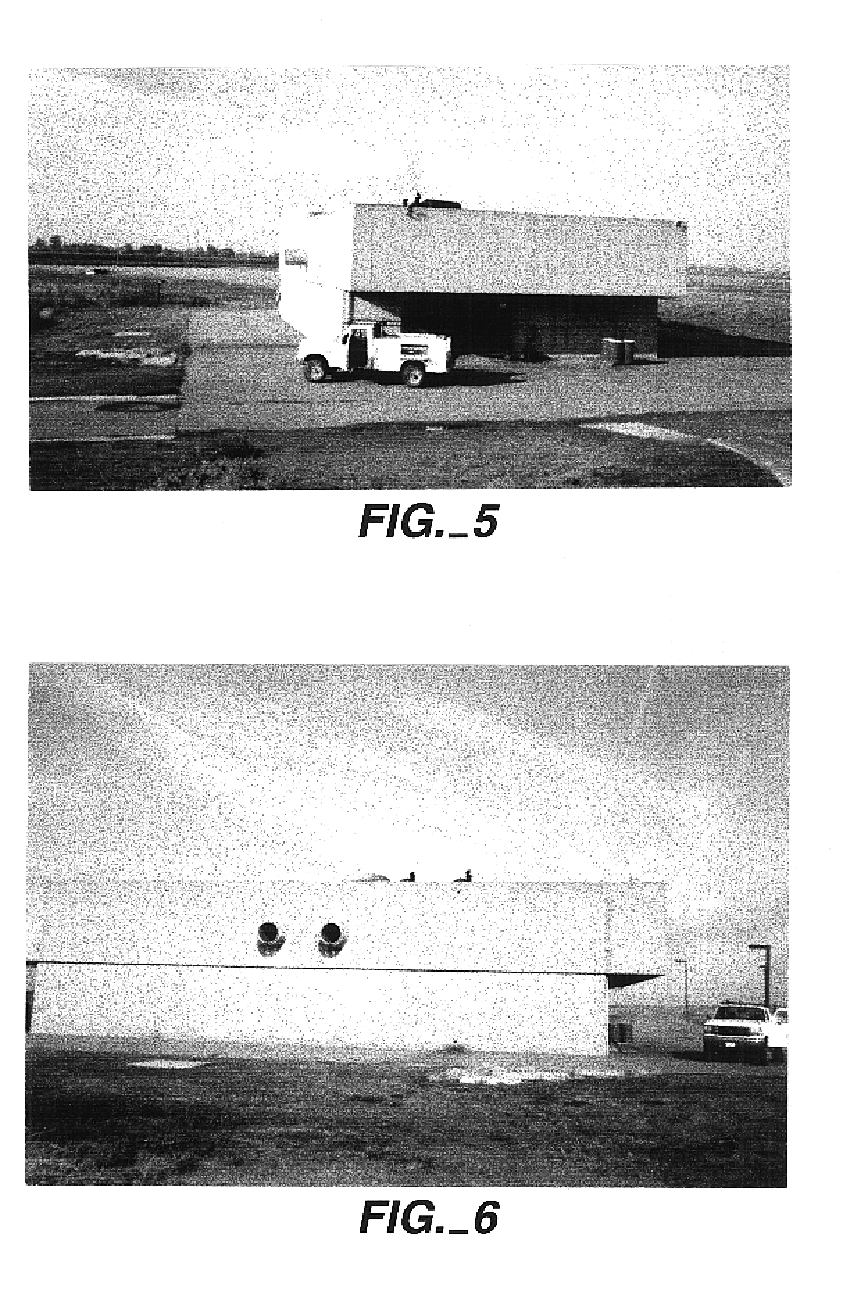Composition as an additive to create clear stable solutions and microemulsions with a combustible liquid fuel to improve combustion
a technology of liquid fuel and additive, applied in the field of ingredients, can solve the problems of inability to transport ethanol/methanol/gasoline mixture through existing pipelines, inability to attract water and separate ethanol from gasoline, and inability to achieve satisfactory combustion, so as to improve the properties of liquid combustible fuel, reduce undesirable elements, and improve combustion
- Summary
- Abstract
- Description
- Claims
- Application Information
AI Technical Summary
Benefits of technology
Problems solved by technology
Method used
Image
Examples
example 1
Combustion Tests with Additive Composition Photo Documentation of Visible Exhaust Emissions
[0456]a) A confidential test experiment was performed at the Stockton East Water District, Stockton, Calif.
[0457]The engine was a 300 hp V8 Caterpillar Diesel engine (one of four pumping engines at the site).
[0458]The additive formulation was by parts by volume:[0459]30 parts linoleic acid[0460]10 parts TERGITOL 1553 (3 moles ethylene oxide 15C alcohol)[0461]28 parts methanol[0462]15 parts water[0463]4.1 parts aqueous ammonia
[0464]The blend ratio was Diesel fuel:additive of 65:35 by volume.
[0465]Forty gallons of the subject additive blend in a 55 gallon drum were lifted by forklift to the level of the far right engine and the fuel pump / line was secured to the fuel drum. The engine was started with fuel / additive blend as its only fuel supply. No changes were made to the engine other than switching the fuel supply.
[0466]With reference to FIGS. 1-6 the experimental results are described.
[0467]FIG...
example 2
Combustion Tests with Additive Composition 1-Minute Filter Sample Collection of Particulate Emissions
[0473]a) A confidential test experiment was performed at the Stockton East Water District, Stockton, Calif.
[0474]The engine was a 360 hp V8 Caterpillar diesel engine (one of four pumping engines at the site).
[0475]The additive formulation, was by parts, by volume:[0476]30 parts linoleic acid[0477]10 parts octanol[0478]28 parts methanol[0479]15 parts water[0480]4.1 parts aqueous ammonia
[0481]The blend ratio was Diesel fuel:additive of 65:35 by volume.
[0482]The white cloth-like material used as the filter to collect particulates is a white felt “Classic felt” approximately 8½″ wide×11″ long, available from Foss Manufacturing Co., Retail Division, and is also available from Mendel's Far-Out Fabrics, 1556 Haight Street, San Francisco, Calif. 94117.
[0483]The properties are as follows:
[0484]
FELT PROPERTY TABLEPROPERTYSPECIFICATIONTESTMETHODFiberPolyester and / or AcrylicWidthAs requested + / ....
example 3
Combustion Tests with Additive Composition (US Environmental Protection Agency Federal Test Procedure for Stationary Sources)
[0516]a) A confidential test experiment was performed at the Stockton East Water District, Stockton, Calif.
[0517]An independent emissions testing company, Normandeau Associates of Berkeley, Calif. performed all emissions tests according to US Environmental Protection agency Federal Test Procedure for stationary sources. Additional particulate measurements were taken to meet California Air Resource Board specifications.
[0518]The additive formulation for both test procedures was by parts, by volume:[0519]32 parts linoleic acid[0520]12 parts octanol[0521]28 parts methanol[0522]16 parts water[0523]4.4 parts aqueous ammonia.
[0524]The engines were two Caterpillar V8 4-Stroke-Cycle Diesel engines (two of the four pumping engines at the site), number Engine # P27 and Engine # P28. Data for engine type and condition at time of testing are as follows:
[0525]
# P273 Model:...
PUM
| Property | Measurement | Unit |
|---|---|---|
| temperatures | aaaaa | aaaaa |
| temperatures | aaaaa | aaaaa |
| temperatures | aaaaa | aaaaa |
Abstract
Description
Claims
Application Information
 Login to View More
Login to View More - R&D
- Intellectual Property
- Life Sciences
- Materials
- Tech Scout
- Unparalleled Data Quality
- Higher Quality Content
- 60% Fewer Hallucinations
Browse by: Latest US Patents, China's latest patents, Technical Efficacy Thesaurus, Application Domain, Technology Topic, Popular Technical Reports.
© 2025 PatSnap. All rights reserved.Legal|Privacy policy|Modern Slavery Act Transparency Statement|Sitemap|About US| Contact US: help@patsnap.com



